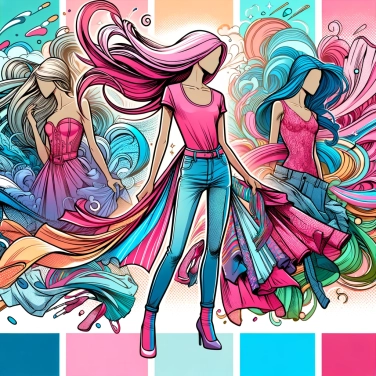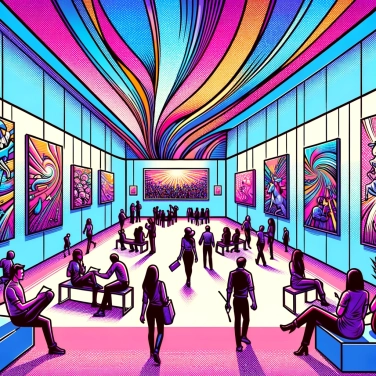The clothes we wear can influence our mood and our perception of ourselves because they can impact our self-esteem, our self-confidence, and even our behavior, depending on the social symbolism, cultural associations, or physical sensation that these clothes provide us with.

The clothes we wear clearly affect our mood on a daily basis. For example, putting on our favorite outfit can immediately evoke positive emotions, while wearing clothes associated with unpleasant memories can bring down our spirits for the day. Certain garments trigger a sense of self-confidence or energy simply because we feel good in them or because they project a certain social image. Conversely, wearing an outfit we consider outdated or ill-suited can make us feel uncomfortable or less assured in public. This phenomenon is related to what is called embodied cognition: our brain associates certain physical sensations (like those experienced through clothing) with specific emotional states. Simply changing our wardrobe can significantly boost our mood or, on the contrary, lead to a bout of the blues.
Our clothing sends symbolic signals to the brain and influences the way we perceive ourselves. When we wear an outfit that we associate with a positive image or a particular emotion (such as confidence, serenity, or energy), our brain unconsciously activates these associated mindsets. This is what psychologists call embodied cognition, the idea that the body directly influences our mind. Additionally, wearing an item of clothing perceived as enhancing can boost self-esteem and self-confidence, which in turn lifts our overall mood. Conversely, clothes that are felt to be negative or ill-suited can cause stress, complexes, or a vague sense of unease. These mechanisms often operate without our awareness, but they have a real influence on our daily lives.
The colors of clothing directly influence the emotions we feel in our daily lives. For example, red spontaneously evokes energy, passion, and sometimes aggression or urgency, while blue calms, inspires trust, and even promotes a state of inner peace. Wearing yellow can stimulate a cheerful and optimistic mood, but overdoing it can tire the eyes or become irritating. In contrast, neutral tones like gray or black have a mixed influence: they reassure, but in excess, they risk weighing down our mood, sometimes giving a feeling of monotony. As for green, associated with nature, it often helps create a sense of balance and relaxation. Therefore, the choice of clothing color in the morning can be a real lever to guide the emotional atmosphere of the day.
What we wear often says a lot about who we are or who we want to become. Our clothes visually illustrate our values, our social affiliations, and even our personal aspirations. When someone adopts a specific look, like punk, classic, or bohemian, it's not just a matter of fashion: it often reveals a deeper part of their personality. Clothes can also contribute to a sense of belonging to a group, creating a reassuring feeling of community and identification with others who share the same lifestyle or ideas. Conversely, trying out different styles of clothing is also a way to explore or modify the image we have of ourselves. We experiment, we play a little with who we are, and sometimes it helps us feel more confident and assert our identity.
Wearing comfortable clothing generally boosts our sense of well-being and makes us feel more relaxed and confident. In contrast, clothes that are too tight or uncomfortable create a physical discomfort that often heightens stress or irritability, making us feel uneasy in our own skin. Feeling comfortable in our clothes frees the mind: we think less about our appearance and more about our interactions or daily tasks. Conversely, wearing uncomfortable clothing frequently distracts us, undermines our self-esteem, and alters the way we imagine being perceived by others. Our overall self-perception and mood can therefore change radically depending on whether we are wearing our favorite relaxed clothes or an impractical outfit that constrains us all day.
A survey conducted among students found that wearing comfortable clothing during exams helps reduce anxiety levels, thereby slightly improving their academic performance.
The color blue associated with clothing is often perceived as reassuring and conveys trust. It is recommended in professional contexts where calmness and authority are sought.
According to a study conducted at the University of Queensland, wearing clothes that we like regularly boosts our self-confidence and enhances our overall mood throughout the day.
The simple act of choosing our clothes instead of having a choice imposed on us positively influences how we perceive our level of personal control and can boost our daily mood.
Changing one's clothing style can be a symbolic way to mark a transition or a new beginning in life. This process allows for a regain of self-confidence, improves personal perception, and can indeed help to move out of a difficult phase by evoking positive emotions.
Sure! Here’s the translation: "Yes. Wearing clothing that suits our body type and aligns with our personal tastes can boost our self-confidence. Outfits in which we feel good naturally enhance our perception of ourselves and our social and professional abilities."
Tight, heavy, or uncomfortable clothing can cause physical and mental stress, leading to bad moods and irritability. In contrast, comfortable clothing promotes a general sense of well-being that positively contributes to our mood and self-confidence.
Indeed, wearing an outfit suitable for the task or appropriate for a professional environment can positively influence our concentration, motivation, and sense of credibility. Therefore, clothing choices can have a real impact on our effectiveness and productivity.
Some colors are associated with specific emotions: for example, red can stimulate energy and confidence, while blue inspires calmness and tranquility. Wearing certain colors can therefore subtly influence our emotional state throughout the day.

No one has answered this quiz yet, be the first!' :-)
Question 1/5